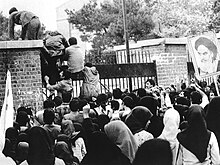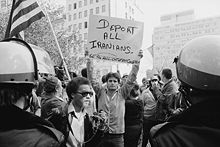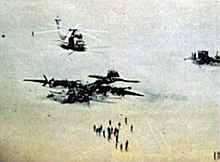This article needs additional citations for verification .(July 2008) |
| History of the Iranian revolution |
|---|
 |
This article is a timeline of events relevant to the Islamic Revolution in Iran . For earlier events refer to Pahlavi dynasty and for later ones refer to History of the Islamic Republic of Iran. This article doesn't include the reasons of the events and further information is available in Islamic revolution of Iran.
Contents
- 1941
- 1953
- 1961
- 1962
- 1963
- 1964
- 1965
- 1970
- 1975
- 1977
- 1978
- 1979
- 1980
- 1981
- See also
- References
- Further reading







